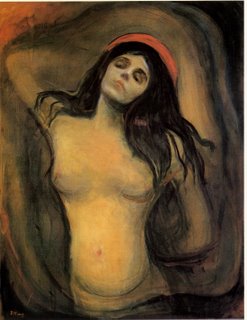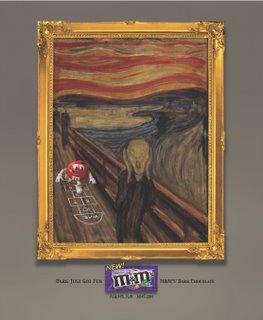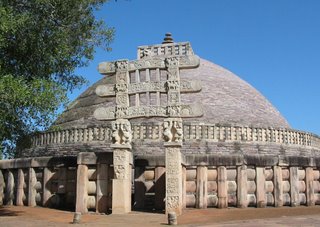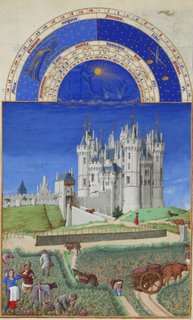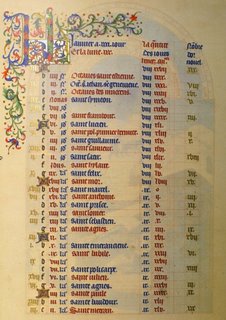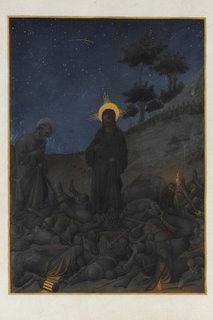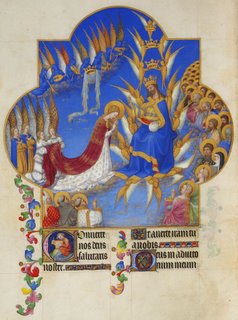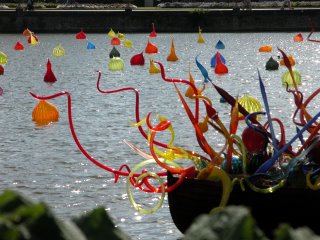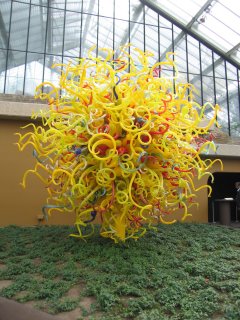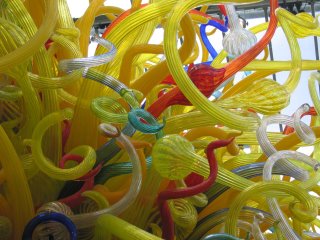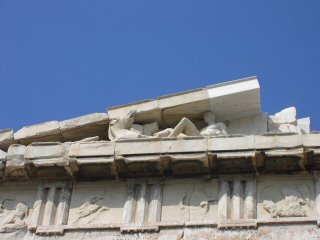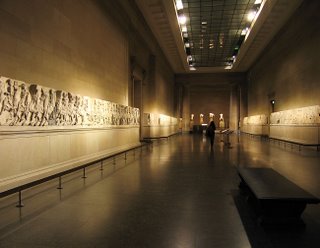Madonna of the Yarnwinder by Leonardo DaVinci? Oil on wood panel, c. 1501.
 Good news! While you most likely haven't read or heard about it anywhere, they've recovered Madonna of the Yarnwinder! In fact, it's a good bet you weren't even aware that it was gone. But it was! And now it's back! Yay!
Good news! While you most likely haven't read or heard about it anywhere, they've recovered Madonna of the Yarnwinder! In fact, it's a good bet you weren't even aware that it was gone. But it was! And now it's back! Yay!You would think that Madonna (also known as Madonna with the Yarnwinder, Madonna of the Spindle, or Madonna with the Distaff) would have gotten more press coverage considering it's possibly a DaVinci - whether or not it is depends on who you ask. According to the FBI and Interpol, heck yes it is. According to everybody else... eeh. We know DaVinci painted a Madonna of the Yarnwinder. However, there are currently a few of them floating around - some sources I've seen suggest two, while others say there are "several". All scholars are prepared to say for certain is that they all came from his workshop - Leo painted the original, then his assistants painted some copies. Does Leonardo's original still exist? We don't know. To complicate matters, Leonardo probably gave his assistants a hand when they made the copies - there are some brush strokes on these paintings that definitely look like they came from him, but it's possible he was just painting onto a copy something his assistants couldn't do right themselves. Here is one of the other Yarnwinders, the Lansdowne Madonna of the Yarnwinder:
 The two paintings have significant differences in color, in the landscape - they're unique enough that you might not even call them copies. Go ahead, pick a favorite, I know you probably have already. The one favored by most scholars is the one that was just recovered, called the Buccleuch Madonna (that would be the darker one, up at the top) - if any of the copies that exist today is the original DaVinci, that one's it. But hey, they're all rather attractive, aren't they? It's not like being given a painting from the DaVinci Workshop when you'd wanted a DaVinci is a big letdown. Quit obsessing.
The two paintings have significant differences in color, in the landscape - they're unique enough that you might not even call them copies. Go ahead, pick a favorite, I know you probably have already. The one favored by most scholars is the one that was just recovered, called the Buccleuch Madonna (that would be the darker one, up at the top) - if any of the copies that exist today is the original DaVinci, that one's it. But hey, they're all rather attractive, aren't they? It's not like being given a painting from the DaVinci Workshop when you'd wanted a DaVinci is a big letdown. Quit obsessing.Anyhow, DaVinci or not, the Buccleuch Madonna was stolen from its home in Drumlanrig Castle, Scotland, on 27 August, 2003. I have to tell the story, because it's pretty funny. Drumlanrig is open to the public - it's pretty much its own little museum. You visit the house, you pay your money, you take a tour and see all the cool stuff. Two men posing as tourists went to the room where the Madonna was, used a knife to overpower a poor student tour guide, then pulled the painting off the wall. As the alarms started going off, the men climbed out the window and down the wall and started running for their getaway car. It so happened that two tourists from New Zealand were outside with their cameras watching all of this happen. As they ran past, one of the thieves said, "Don't worry, love, we're the police. This is just practice." Oooh boy. I have a hard time hating these people just because that's so funny. Of course, once the Madonna was stolen everybody had to come up with an estimated value to make the press "ooh" and "aah". Generally the value given was $65 million. (For you British, the estimate was about 30 million pounds.)
Of course, that's what the painting might have fetched at auction. If the thieves had managed to sell it - mind you, it would have to be to someone very shady because any buyer would know that it was stolen property - they might have been lucky to pull $1 million. Not sure how that worked out, but the painting was found in a lawyer's office in Glasgow on 4 October. Four men were arrested, but if any of those four men are the men originally involved in the theft, who knows? Interestingly, it looks like the painting never left Scotland. Let's hope that's a sign that security measures were tight enough that taking it anywhere else would have been impossible.
Oh, and if you didn't notice before the painting is of the Virgin Mary and the Christ child, and the yarnwinder is in the shape of a cross so it's prefiguring the Passion and all of that. Really, though, I'm sure that when he painted it, Leonardo wanted us to focus not on its reverent subject matter but on who painted it, who stole it and how much it's worth.
